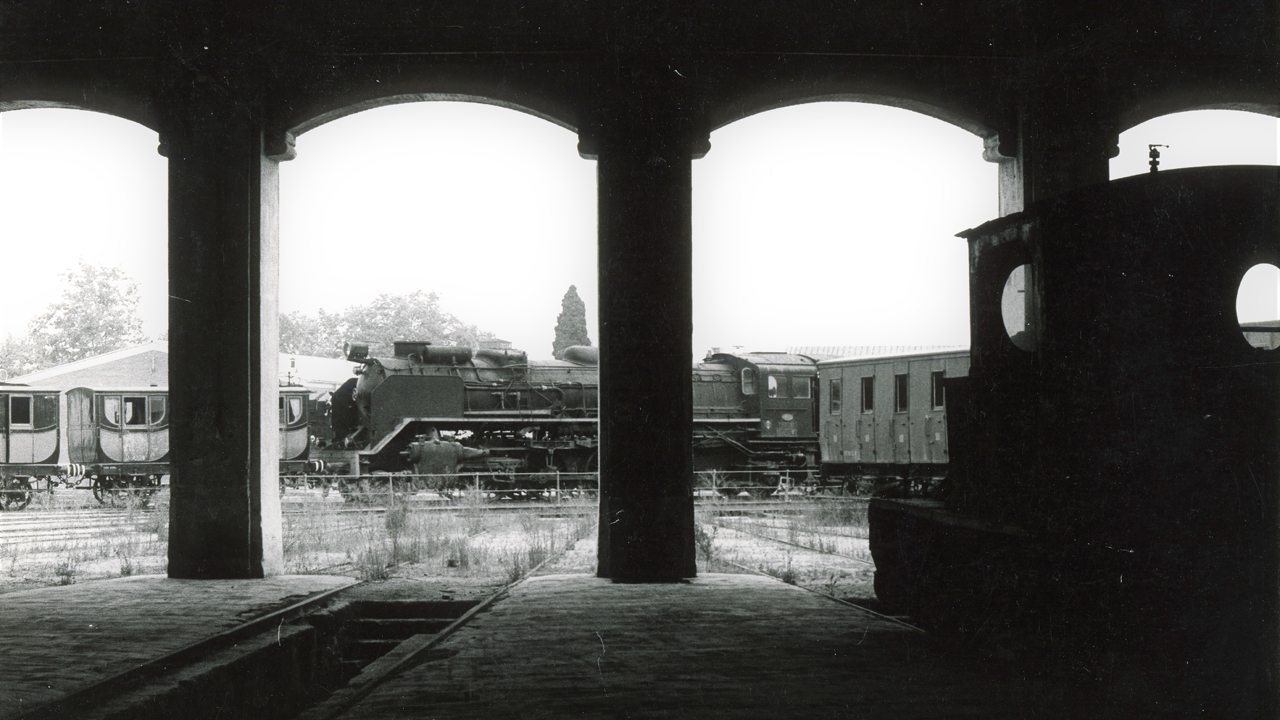
Locomotive exhibition for the XIX International Morop Congress, 1972

The Rotonda, start 80s

The Rotonda, start 80s 80

General view of the Rotonda, 80s

The Rotonda, 1998

Last architectural intervention of the Rotonda building, 2013

Last architectural intervention of the Rotonda building, 2013
6 - Rotonda (Roundhouse) building
The most characteristic building of a Steam Depot, and
now of this Museum, is a circular structure, which in this
case is the quarter-circle Rotonda (Roundhouse). It is also
called a “cocherón” in Spanish and was the heart of the
operating system. It is made up of 12 tracks with a pit
leading to the “Swing Bridge.” The roof originally featured
a series of chimneys to let out the engines’ steam and
vapour. They were eliminated before it was turned into a
Museum.
The duties of the railway workers inside it consisted of
greasing and preparing the locomotives for service,
supplying materials such as coal, grease, sand or water,
cleaning and maintaining the different elements, doing
repairs and also organising the drivers to cover the
different shifts. A lot of people in different categories
participated in these jobs. Up to 900 employees worked in
all the installations, in an atmosphere full of smoke, soot
and grease. Also attached to the depots were administrative
staff and drivers, who were essential for running the
engines. Each engineer-and-stoker team was assigned to a
locomotive, which they had to clean, tune and start up,
which took at least three hours until they attained
sufficient steam pressure.
Although there used to be a great number of these buildings,
they have now practically disappeared from the railway
landscape. In the case of Vilanova, the last urgent
refurbishment took place in 2012, while further major work
is still pending. On the other hand, a design project for
covering the other tracks is in its initial phase; this
initiative will enable us to protect all of the Museum’s
historic vehicles.


